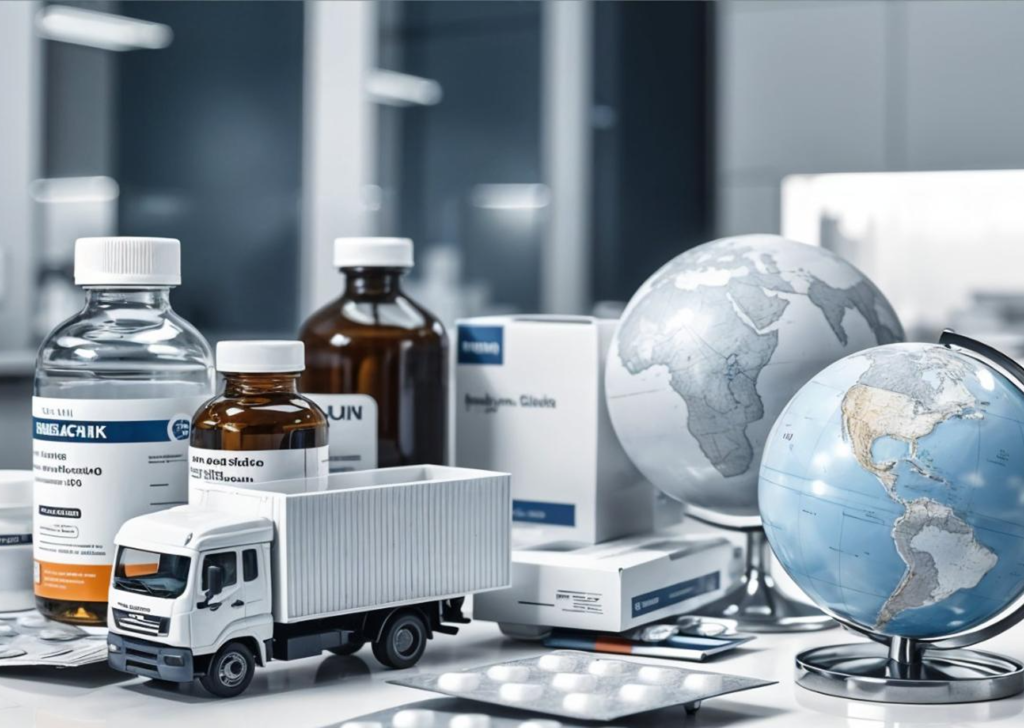Introduction: Why Pharmaceutical Packaging is Critical
Pharmaceutical packaging plays a vital role in ensuring drug safety, regulatory compliance, product integrity, and patient convenience. Choosing the right packaging is essential to protect medicines from contamination, moisture, light, and physical damage, while also meeting strict regulatory standards set by the FDA, WHO, and GMP.
This guide explores:
- The different types of pharmaceutical packaging
- Regulatory and compliance factors
- Key considerations in selecting the right packaging
- How MNIPL provides high-quality pharmaceutical packaging solutions
By the end of this article, businesses will understand how to choose the best pharmaceutical packaging materials that ensure quality, durability, and compliance in global markets.
Types of Pharmaceutical Packaging
Primary Packaging (Direct Contact with the Product)
Primary packaging ensures drug stability, effectiveness, and patient safety. It must be made from materials that do not react with the pharmaceutical formulation while maintaining barrier protection against environmental factors.
- Glass Bottles – Used for liquid formulations, syrups, and injectables requiring airtight containment.
- PET Bottles – A lightweight and shatter-resistant alternative for oral solutions and syrups.
- Blister Packs & Aluminium Foil – Ideal for solid dosages like tablets and capsules, offering protection against moisture and contamination.
- PVC & PVDC Films – Used for blister packaging, providing high moisture barrier protection.
Secondary Packaging (Protection and Branding)
Secondary packaging ensures safe handling, storage, and transportation while also serving branding and informational purposes.
- Mono Cartons & Inner Cartons – Offer structural support, branding, and regulatory labeling for pharmaceutical products.
- Corrugated Boxes – Used for bulk transport and secure storage of medicines.
- Adhesive Labels & Brochures – Ensure accurate drug information, branding, and compliance with regulatory labeling requirements.
Choosing the right packaging type depends on the formulation, stability, and intended use of the pharmaceutical product.
Key Factors in Choosing the Right Pharmaceutical Packaging
1. Regulatory Compliance and Safety Standards
Pharmaceutical packaging must adhere to global regulatory requirements to ensure product safety, authenticity, and proper labeling.
- Good Manufacturing Practices (GMP) – Ensures high standards in pharmaceutical packaging production.
- FDA & WHO Compliance – Regulates materials, labeling, and safety requirements for global pharmaceutical distribution.
- Tamper-Evidence & Child-Resistant Packaging – Essential for preventing unauthorized access and accidental consumption.
Failing to meet these regulations can lead to legal penalties, recalls, and brand damage.
2. Product Stability and Protection
Pharmaceutical packaging must protect the drug formulation from degradation caused by moisture, oxygen, light, and temperature fluctuations.
- Glass bottles and vials are used for sensitive liquid formulations requiring an airtight seal.
- Aluminium foil packaging is ideal for tablets and capsules to prevent moisture exposure.
- PVC and PVDC films provide an additional barrier layer against external contaminants.
Ensuring the right packaging extends product shelf life and maintains efficacy.
3. Packaging Durability and Transportation Readiness
Pharmaceutical products undergo long-distance transportation and storage in varied conditions. Packaging must be:
- Impact-resistant to prevent damage during shipment
- Lightweight yet durable to reduce costs and improve handling efficiency
- Tamper-proof and secure to ensure product integrity throughout the supply chain
Cartons, corrugated boxes, and high-quality plastic or glass containers help prevent breakage and contamination during transit.
4. Branding and Consumer Convenience
Pharmaceutical packaging must be easy to handle, store, and dispense while also supporting brand recognition.
- Clear labeling with dosage instructions and warnings improves patient safety
- Custom branding solutions ensure differentiation in a competitive market
- User-friendly designs like resealable packaging and blister packs enhance the consumer experience
Modern pharmaceutical packaging should balance compliance, safety, and branding requirements.
5. Sustainable and Eco-Friendly Packaging Solutions
The pharmaceutical industry is shifting towards sustainable packaging to reduce environmental impact. Companies are exploring:
- Biodegradable materials that reduce plastic waste
- Recyclable PET bottles and paper-based packaging
- Lightweight materials that reduce carbon footprint in transportation
Sustainability in pharmaceutical packaging not only supports environmental responsibility but also meets consumer demand for eco-friendly solutions.
How MNIPL Ensures High-Quality Pharmaceutical Packaging
MNIPL provides industry-compliant pharmaceutical packaging solutions, ensuring:
1. Regulatory Compliance & Quality Assurance
- Packaging meets GMP, FDA, WHO, and ISO standards.
- Ensures tamper-evidence, moisture protection, and long-term drug stability.
2. Comprehensive Product Portfolio
- Glass & PET Bottles for liquid and oral drug formulations.
- Aluminium & Blister Foil to protect solid dosages.
- Mono & Inner Cartons for structural integrity and branding.
- Corrugated Boxes for bulk storage and safe transportation.
3. Customization & Branding Options
- Custom-printed labels, brochures, and packaging for branding and compliance.
- Eco-friendly alternatives for sustainable pharmaceutical packaging.
4. Global Supply Chain Expertise
- MNIPL ensures seamless sourcing, distribution, and delivery of packaging materials worldwide.
- Partnerships with trusted manufacturers ensure consistent quality and reliable supply.
Conclusion: Making the Right Choice for Pharmaceutical Packaging
Selecting the right pharmaceutical packaging requires balancing safety, compliance, durability, and branding. Packaging decisions impact drug effectiveness, consumer trust, and regulatory approvals.
MNIPL offers high-quality, certified pharmaceutical packaging solutions, ensuring compliance, reliability, and efficiency for pharmaceutical companies worldwide.
Get in Touch with MNIPL for High-Quality Pharmaceutical Packaging Solutions
Whether you need primary or secondary pharmaceutical packaging, MNIPL provides expert guidance and premium-quality materials to meet your needs.

